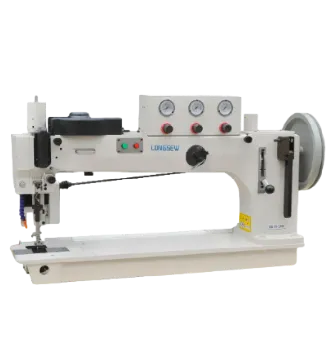Automatic Sewing Machine for FIBC Bags with High Efficiency and Precision
The Evolution of FIBC Bag Auto Sewing Machines
FIBC (Flexible Intermediate Bulk Container) bags have become a staple in the packaging industry due to their ability to carry large quantities of bulk materials, such as chemicals, fertilizers, and food grains. As the demand for FIBC bags has grown, so has the need for specialized machinery to produce them efficiently. Among these machines, auto sewing machines for FIBC bags have revolutionized the production process, ensuring quality, speed, and cost-effectiveness.
Understanding FIBC Bags
Before delving deeper into the significance of auto sewing machines, it's essential to understand what FIBC bags are. These bags are made from woven polypropylene or other durable materials, designed to hold substantial loads. Due to their design and durability, FIBC bags can be filled to various capacities, often exceeding thousands of kilograms. Consequently, efficient manufacturing processes are crucial for ensuring that these bags maintain integrity and safety during storage and transportation.
The Role of Auto Sewing Machines
Auto sewing machines play a pivotal role in the manufacturing of FIBC bags. Traditional sewing methods are often labor-intensive, leading to inefficiencies and increased production costs. In contrast, auto sewing machines automate the sewing process, significantly enhancing speed and precision. These machines are designed to handle the thicker materials used in FIBC bag production, providing consistent stitching quality that meets industry standards.
One of the primary advantages of using auto sewing machines is their ability to operate continuously, enabling manufacturers to produce large volumes of bags in a shorter time frame. This automation reduces the reliance on manual labor, which is not only cost-effective but also minimizes the risk of human error, ensuring that each bag undergoes consistent quality control.
Features of Modern Auto Sewing Machines
fibc bag auto sewing machine

Modern auto sewing machines come equipped with various features that enhance their functionality. For instance, many machines now incorporate advanced technology such as computerized controls that allow for precise stitching patterns and configurations. These machines can be programmed to perform multiple stitching styles, making them versatile for different types of FIBC bags.
Moreover, many auto sewing machines are equipped with features that enable quick adjustments for different bag sizes and specifications. This flexibility is crucial for manufacturers who need to adapt their production lines to meet varying customer demands swiftly.
Another notable feature is the integration of safety mechanisms. Given that FIBC bags often carry hazardous materials, the sewing machines are built with multiple safety precautions to prevent accidents and ensure that the finished products are secure and reliable.
Cost-Effectiveness and Efficiency
Investing in auto sewing machines for FIBC bag production represents a significant step towards increased efficiency and reduced operational costs. While the initial investment may be higher than traditional sewing equipment, the long-term savings due to reduced labor costs, increased production rates, and lower error margins make these machines an economically sound decision.
As companies continue to seek ways to optimize their production processes, the trend toward automation is unmistakable. FIBC bag manufacturers who embrace auto sewing technology position themselves ahead of the competition, meeting rising demand with high-quality products delivered promptly.
Conclusion
In conclusion, auto sewing machines have become indispensable in the FIBC bag manufacturing industry. Their ability to enhance production efficiency, ensure consistent quality, and reduce labor costs has transformed how these essential packaging solutions are produced. As technology continues to advance, we can expect further innovations in this field, leading to even more sophisticated sewing machines designed to meet the evolving needs of the packaging industry. The future of FIBC bag production is clearly leaning towards automation, making auto sewing machines an essential investment for manufacturers aiming to thrive in a competitive marketplace.
-
Industrial Cylinder Arm Sewing Machine: Revolutionizing Heavy-Duty SewingNewsJul.28,2025
-
Cylinder Arm Sewing Machine: Perfect for Special Sewing ApplicationsNewsJul.28,2025
-
Cylinder Bed Sewing Machine: Essential for Sewing Complex MaterialsNewsJul.28,2025
-
Heavy Duty Sewing Machine: The Essential Tool for Industrial ApplicationsNewsJul.28,2025
-
Computerized Pattern Sewing Machine: Revolutionizing Precision StitchingNewsJul.28,2025
-
Heavy Duty Industrial Sewing Machine: Power Meets PrecisionNewsJul.28,2025
-
Leather Sewing Machine: The Industrial Standard for Tough MaterialsNewsJul.18,2025





























